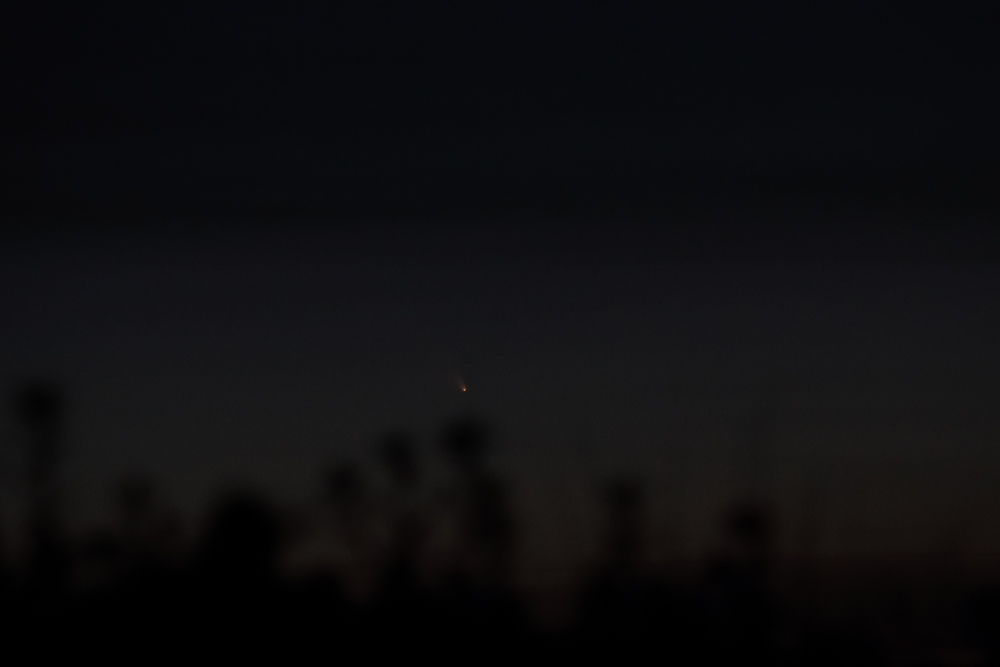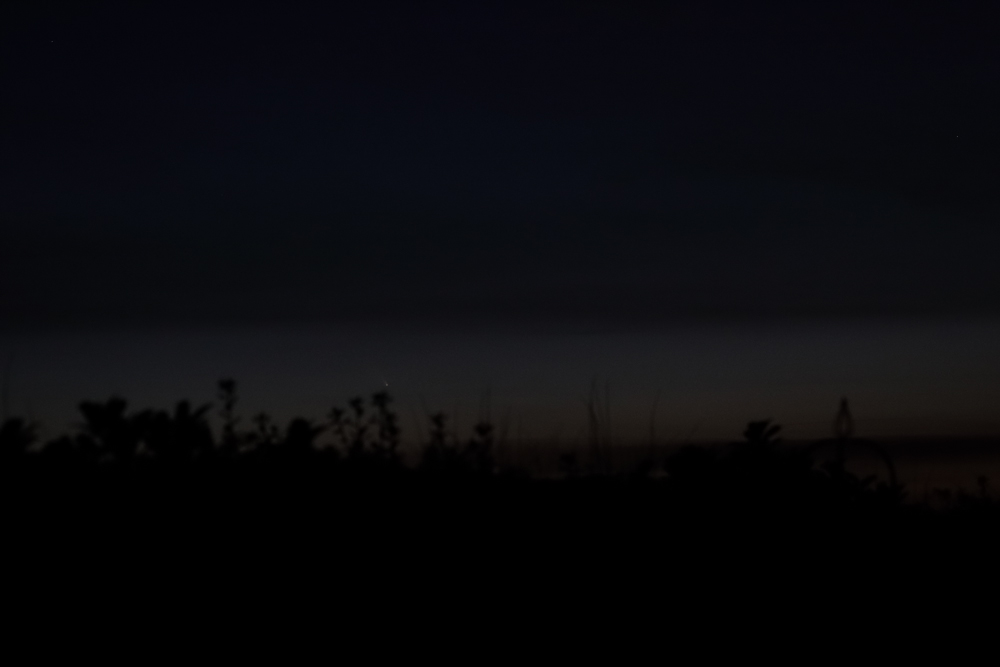England v Algeria in the World Cup is on ITV1 and the match is so good, I am typing this. Yes, it is terrible and England are embarrassingly woeful. It’s a pity that assistant coach David Beckham can’t go on, even in his nicely cut suit he’d play better than this lot. In fact my grandmother would do better than Rooney et al, and she’s been dead for nine years.
I did manage to get out and observe Comet C/2009 R1 McNaught the other night, I set my alarm for 0200 and was actually able to get out of bed to do so. I can’t usually get up early to go observing, but as this comet is only around for a short while, I made myself get up. I had to walk up the footpath in front of the house to get clear of the trees blocking the view of Perseus (which is why I used my 8×42 binoculars and not a telescope) which the comet is currently passing through. It took me a while to see it as the sky was not that dark (it is June at 50 degrees north, after all), there was a lot of murk in the sky and, hence, a lot of skyglow. The comet was faint and round and I could not see the tail.
My car passed its MOT with no problems today, although yesterday I noticed a judder in the clutch. However this type of electronically-controlled manual gearbox called a ‘Sensodrive’ is known for clutch judder, so I am hoping it is not a problem. Anyway, the car not needing anything done to it means I can begin saving for the 18″ Dob I want to get. I have two months worth of work starting on the 24th, although it won’t be anywhere near enough to save up all the nearly £3000 needed, it’ll be a start. Providing work keeps coming I should be able to save the money in 6-7 months.
I had been doing a separate blog for the Herschel 400 project, but I have decided to bin it and just put the posts here, after all I am duplicating 99% of the stuff and that’s pretty pointless, so I am just going to keep it all on this one.





